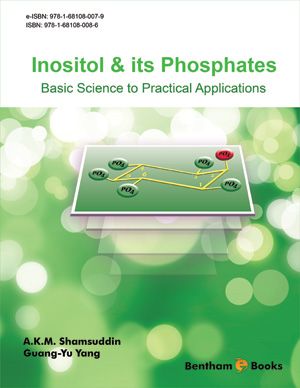Abstract
Considerable evidence has accumulated indicating a significant role of dietary inositol and its phosphates, and phospholipid derivatives in human health. In a typical American diet, the amount of myo-inositol per 2500 kcal diet is approximately 900 mg, and most of the inositol compounds are phospholipid derivatives. Virtually all of the ingested myo-inositol (99.8%) is absorbed from the human gastrointestinal tract. In general a normal circulating fasting plasma myo-inositol concentration is approximately 0.03 mM and this material turns over with a half-life of 22 minutes. Contrary to the misconception held by some, inositol hexaphosphate (InsP6) likewise is also rapidly absorbed (79 ± 10%) and distributed widely throughout the body. While there are interspecies variations, in general they all point to rather rapid absorption. Following an InsP6-poor diet, the basal plasma value in humans is 0.07 ± 0.01 mg.L-1 that rises to 0.26 ± 0.03 mg.L-1 after ingestion of InsP6-normal diet.
Keywords: Inositol hexaphosphate, inositol pyrophosphates, InsP6, isomers, phytate, phytic acid, polyphosphate.






















